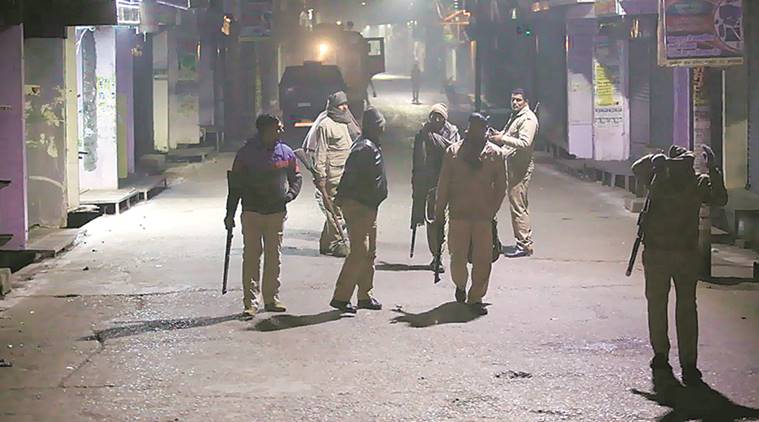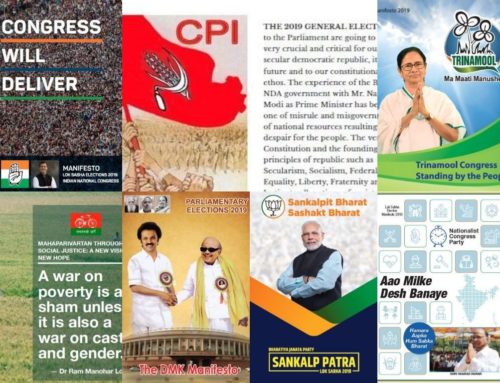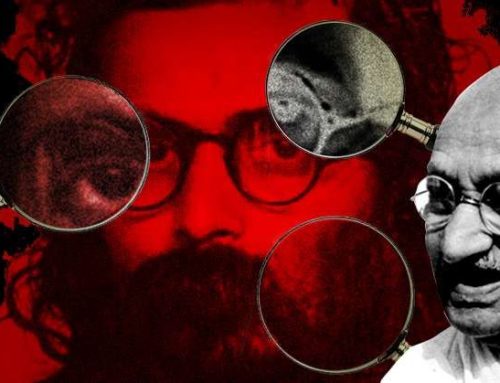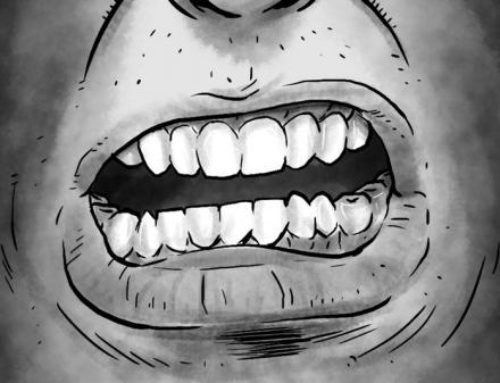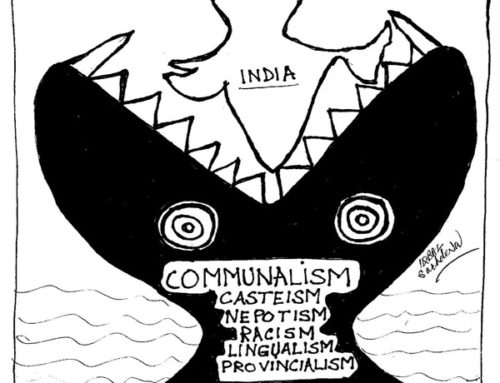Kasganj Fact Finding Report
(Secular Perspective April 16-30, 2018)
The dominant discourse on nationalism in the country today has narrowed down to superficial parameters and litmus test of chanting of slogans like Vande Mataram and organizing aggressive bike rallies by Hindu supremacists in Muslim majority areas as a show of strength and assertion of their supremacy. This recently took place in Bhagalpur on the occasion of Ram navami and followed by communal violence. This is not the first and the only time such provocation was made. This is also largely the story of the violence that unfolded in Kasganj on 26th January 2018. The youth from Sankalp Foundation in Kasganj organized a bike rally on 26th January 2018 without necessary permission and insisted on passage through a Muslim dominated area where the Muslim residents had organized a flag hoisting event on the occasion of Republic day. In the violence that ensued a youth called Chandan Gupta was shot and succumbed to his injury. One Naushad too was shot in his leg. Violence was orchestrated on 26th, 27th and 28th January by Hindu supremacists in which shops belonging predominantly to the Muslim owners were burnt down.
A fact finding The fact finding team consisted of Irfan Engineer, Director of Study of Society and Secularism (CSSS), author and social activist, Neha Dabhade, Dy. Director of CSSS and Akram Akhtar Chowdhary, social activist, Afkar India Foundation. The team spoke to the family of Chandan Gupta, the family of Salim, shop owners in the area where the shops were attacked and vandalized, journalists, residents in Badu Nagar, the police (SP), Congress chief from Kasganj, Shashilata Chauhan, BSP leader, Rajeev Sharma, Businessman, Anupam Sharma.
The findings of the committee very clearly point towards the communal politics that is encouraged and brewing in Uttar Pradesh and which seeks to render the Muslim community as second-class citizens. Uttar Pradesh known for its ganga jamuna tehzeeb is also infamous for communal violence. It has an interesting chequered political history of mobilization and counter mobilization around the Ram Jamnabhoomi movement and politics of social justice through implementation of Mandal Commission Report in 1980s. The former issue has been manipulated to polarize communities and project one consolidated ‘Hindu’ identity, taking in its fold Dalits and other oppressed castes by invisibilizing their exploitation, for electoral benefits. There is a steady but unfortunate shift from the politics of social and economic justice to politics of communalism. The Aligarh, Meerut and Muzaffarnagar riots were some riots on very large scale. Post 2014, there are no riots on such large scale but sub radar low intensity violence. The issues of cow and inter religious marriages are exploited to spread hatred and violence in different forms including lynching. This has made the state volatile and the marginalized like Dalits, Muslims, women in the state very vulnerable.
Different narratives in Kasganj:
There are two narratives that emerged from the interactions of the team with the different individuals. First narrative is that of Sushil Gupta, father of the deceased Chandan Gupta. According to Sushil Gupta, Sankalp Foundation was an organization of youth which engaged in charity activities like distribution of food, clothes and blankets to the poor. Chandan Gupta similarly was very active in serving the poor and particularly in blood donation. He donated blood thrice and all three times to Muslim recipients as claimed by his father. He fixed the blame for the violence in Kasgaj squarely on the Muslim residents of Badu Nagar. He explained the happenings of the fateful day with the help of a video shot that day.
He narrated that Sankalp Foundation planned a bike rally to be taken out on 26th January. He claimed that the youth were carrying Indian flags. The rally went to Badu Nagar and there were chairs organized there at the Veer Abdul Hamid Chauraha. The Youth insisted that the chairs be removed and they be given passage through the Chauraha. According to Sushil Gupta there was no flag hoisting since no flag hoisting takes place so late at 10 am. Pointing out to one man in the video, whose name he wasn’t ready to disclose, he accused him for the violence. He said there was stone pelting by the residents on the unarmed and helpless youth which forced them to abandon their vehicles and flee from the area.
The fact finding team in the video shown to them by Sushil Kumar noticed that the youth in the rally were very aggressive and were carrying saffron flags. They were aggressively shouting slogans. There are very few Muslim residents waiting at the Veer Abdul Hamid Chauraha without arms. The video doesn’t show any attack by the Muslim residents. While Sushil Gupta refrained from blaming the whole Muslim community for the violence, he believed that some ‘bad elements’ from the community were responsible for the violence.
The Congress leader in Kasganj, Shashilata Chauhan attributed this violence to the personal enmity of the youth from both the communities. And this fight was given communal hue. She rued that innocent youth from both- Hindu and Muslim community are arrested by the police. But she strongly pointed out to the speech of the BJP MP, Rajveer Singh on the evening of 26th January after the death of Chandan Gupta and how it deteriorated the atmosphere and fanned violence. Rajveer Singh said the following, “I myself with the force have come amongst you. The incidence which has happened cannot be forgotten in any case. I haven’t seen such kind of anger in Kasganj ever before this. In this incidence there’s no mistake of “our people”. This fight has happened in a preplanned fashion in which “one of us” has died. I have gathered the information that Chandan Gupta, “one of us”, has died in this fight. The investigation of this matter would be done without in any delay.”
Narrative by Muslim residents:
The second narrative is that of the residents of Badu Nagar. Dr. Asif Hussain has a house at the Abdul Hamid Chauraha in Badu Nagar and the rally that day passed outside his house. He told this was the first time that the flag hoisting program was organized in the chauraha. Every year, the Muslims organize flag hoisting in schools. But this year the community wanted to demonstrate to the government and people that Muslims too hoist flags and are patriotic in contrast to the popular stereotypes that Muslims are disloyal to India. In the past, the RSS wanted the madrasas in the State to provide video documentation to prove that they hoisted the Indian flag republic day. Thus elaborate preparations were made where one Mufti Kubeb was invited to hoist the flags at 9.30am and also school children were called. Chairs were arranged at the small chauraha for the audience to sit.
He also furnished several videos for the fact finding team which were essentially footage of the CCTV. It can be seen in the video that approximately at 10 am on 26th January, 60 to 70 bikes in the rally, some carrying saffron flags came to the chauraha and aggressively started demanding that the chairs be removed and the rally allowed passing through. The organizers of the flag hoisting requested the youth to attend the flag hoisting and assured that after the hoisting the chairs will be removed for the rally to pass. The youth were carrying saffron flags. The youth in the rally were aggressively shouting slogans like “Hindustan mein rehna hoga to Vande Mataram kahana hoga” and “Radhe Radhe”. The residents refused to chant these slogans and instead raised their own slogans of “Godse murdabad”. One of the youth from the bike rally pulled a stick and attacked one of the residents as seen in the video by Dr. Asif. The residents also then threw chairs on the youth and more residents came out in the chauraha. The youth got intimidated and fled the Chauraha to regroup at tehsil road.
The Residents noted down the registration numbers of all the bikes left behind and called the police handing them over the list of the bikes left behind. The police came to the Chauraha after the youth had fled and removed the bikes. When the youth this time regrouped at Tehsil Road, they were armed with pistols and sticks. They started attacking the Muslims on the road and vandalized their shops. In the violence, Chandan Gupta received bullet shots and also one Naushad was shot in his leg.
When the team visited Veer Abdul Hamid chauraha it saw how small the chauraha is. The roads in Badu Nagar leading to and in around Veer Abdul Hamid chauraha are narrow lanes, not broader than 8 feet. These lanes are flanked with open sewages on both the sides and have small shops and houses on either side with their stairs and platforms jutting out onto the street. It’s extremely impossible for two motorcycles to cross each other from opposite directions. One single bike can pass at any given point of time after great maneuvering with the pedestrians and other obstacles. In best of times, the bikes can navigate at a speed less than 10 kmph with frequent breaks to negotiate people walking on the lane. With chairs arranged for the flag hoisting the lanes were temporarily blocked. Any prudent citizen wouldn’t want to ride on bikes through these lanes in a rally even without the chairs temporarily kept there. The only purpose to demand passage on bikes through these narrow lanes could be to create mischief or to provoke the Muslim residents. The other probable reason could be the arrogance that the residents of the area mean nothing and they could ride rough shod over them to demonstrate that they wield superior strength / power as it is their government which is in power.
Role of the Police:
The role of the police has been shameful. The police action was biased and served the political agenda of the ruling regime in UP. The SP of Kasganj made irresponsible statement saying that it was not possible to control the riot since there is never as many police personnel as rioters! And thus he shirked away responsibility of security force. The police dismiss the communal angle to this violence by blaming anti social elements for the violence and this way protecting the wrong doers. Their complicity in the riots is on many accounts.
Firstly, the police inspite of having prior information about the rally didn’t take any steps to stop it. Police conceded that Sankalp Foundation didn’t have the permission to take out this rally. The shops and other property belonging to Muslim owners, a mosque, hawker stalls were attacked for three days in different places in Kasganj. The police could have taken strict action against the youth since they didn’t have the necessary permission and their bikes were seized. The registration numbers of the bikes could have led the police easily to the perpetrators of violence. But the police released the property used in crime (bikes) without pressing any charges!
The FIRs need to be problematized in order to clearly see the deliberate lapses on the part of the police which will deny justice to the victims. In the FIRs filed by the Hindus against Muslims, names of the accused are mentioned. However, no names have been mentioned in the FIRs where Muslims are victims. In fact the names of the shops or the owners belonging to Muslims which were attacked are not named in the FIR making it very vague for any proper investigation and prosecution.
Most of the arrested are innocent Muslims who were arbitrarily arrested by the police. Those arrested are innocent and happened to be on the road when the police were making arrests- some out to shut their shops after the violence or some out to buy daily supplies like milk. One of the arrested is a Muslim youth with 70 percent disability. One is a senior citizen whose wife passed away while he was incarcerated. The sections slapped against them are stringent like murder, rioting etc while there are very few Hindus named and all the other accused are “unknown”. However, the arrested Hindus are also innocent and mere scapegoats perhaps under political pressure to save the real culprits. The real culprits who were in the rally are absconding, neither named nor arrested. The police refused to take the FIRs of the Muslim residents and thus they are compelled to send their complaints in forms of application to the courts.
Salim who is the main accused in the case of Chandan Gupta’s death has a strong alibi. His brother Shamim showed the fact finding team a video which shows that Salim who is reputed businessman in Kasganj was in a flag hoisting programme in a school around 10 am on 26th January. The other shopkeepers vouch for his good character. It is important to note that Sushil Gupta filed the FIR about his son’s death after more than 13 hours of his death naming 20 Muslim residents including Salim without even being present there! This indicates that there is a strong possibility that he was tutored by persons having vested interests and the death used as a political tool to implicate innocent citizens. Chandan Gupta instead of being taken to the hospital after he was shot which would have been a natural reaction to save him was taken to the police station first. Yet the FIR was not filed that time.
Conclusions/ Findings:
There are many lessons to take from this incident of communal violence. The incident is reflective of the dominant discourse in the country where Hindu supremacists due to the political patronage they enjoy are openly displaying their arrogance and power. The bike rally from a majority Muslim area was a demonstration and reminder that the Hindu supremacists and their ideology have legitimacy with the coming to power of BJP. The aim is to render the Muslims as second class citizens and make them submit to political ideology of exclusion, inequality and hatred. The state is criminalizing the victims and protecting the perpetrators and thus encouraging this violence and hatred. The fact finding team recommends that investigation is made into the role of the speech made by Rajveer Singh in this violence. Compensation should be given to the victims in adherence to international standards. And lastly, that the civil society organizations collectively create platforms for dialogue and better understanding between communities. The Team was relieved to see that this violence hasn’t deepened the communal divide and polarization. The Hindu community in Kasganj had sympathy for the Muslims and their losses and condemned the violence. All is not lost in Kasganj.



